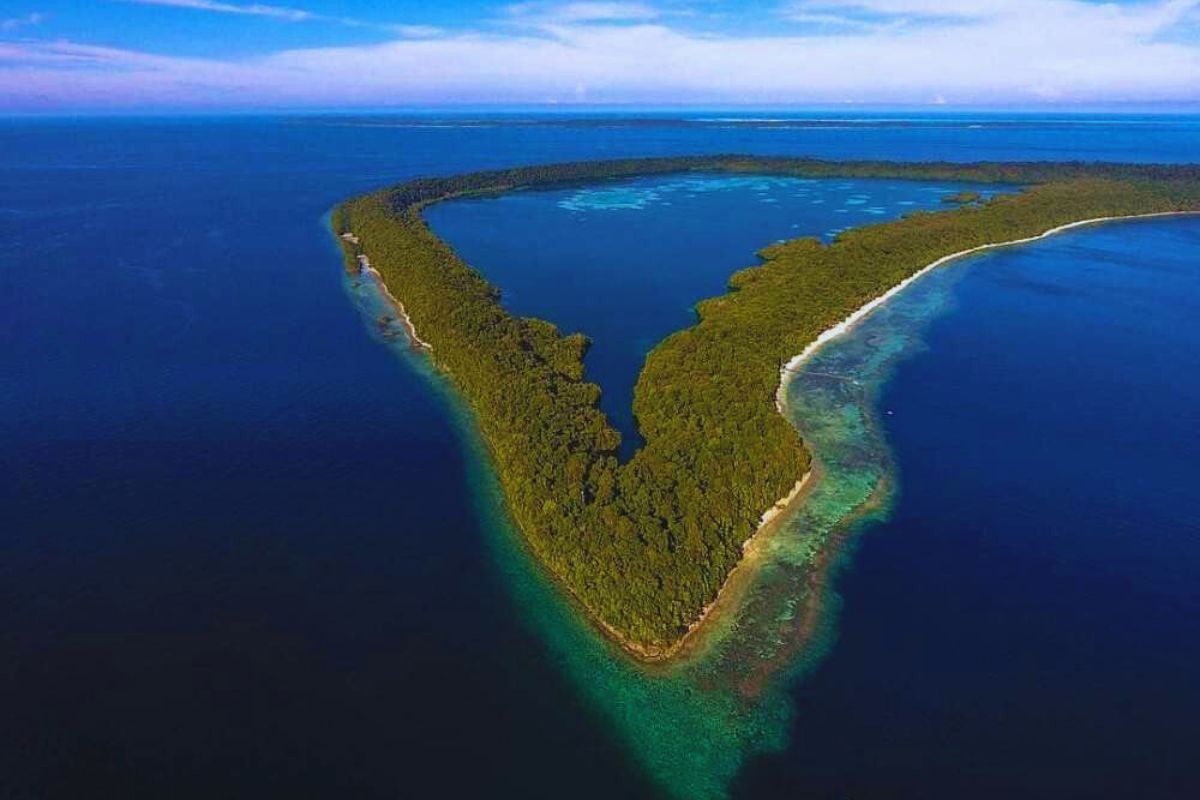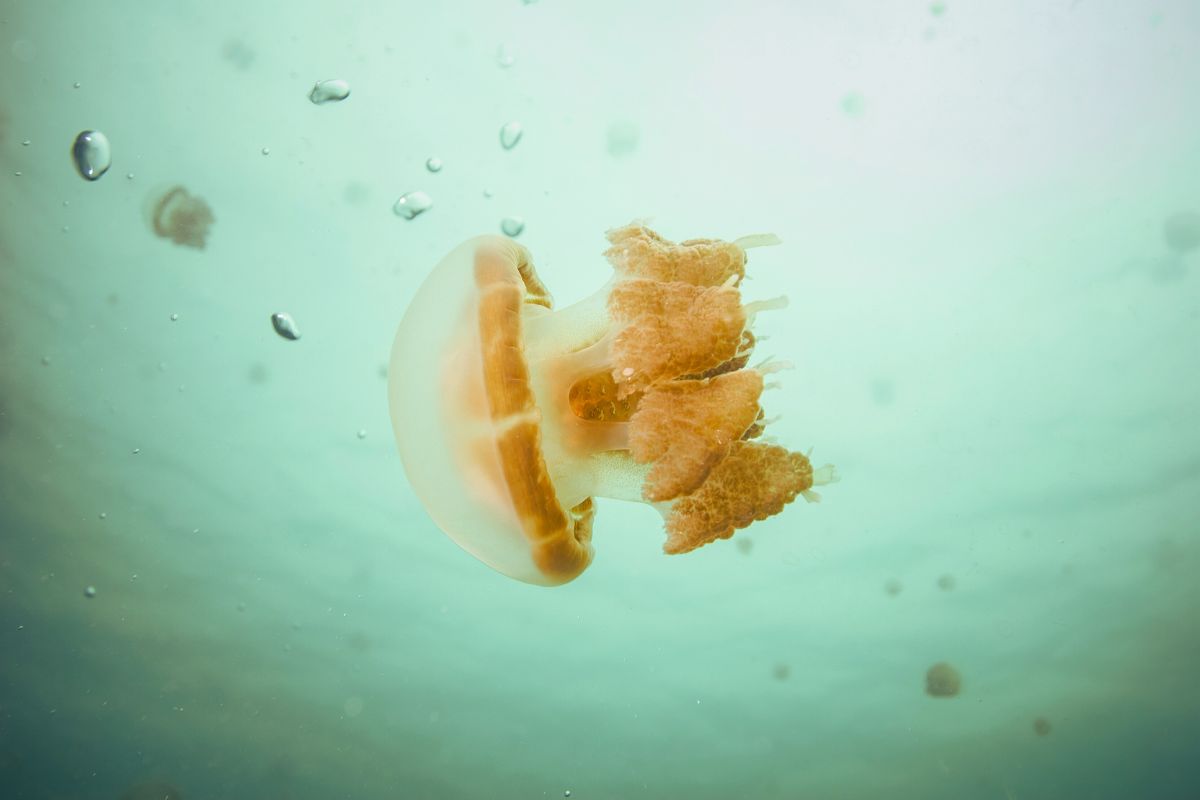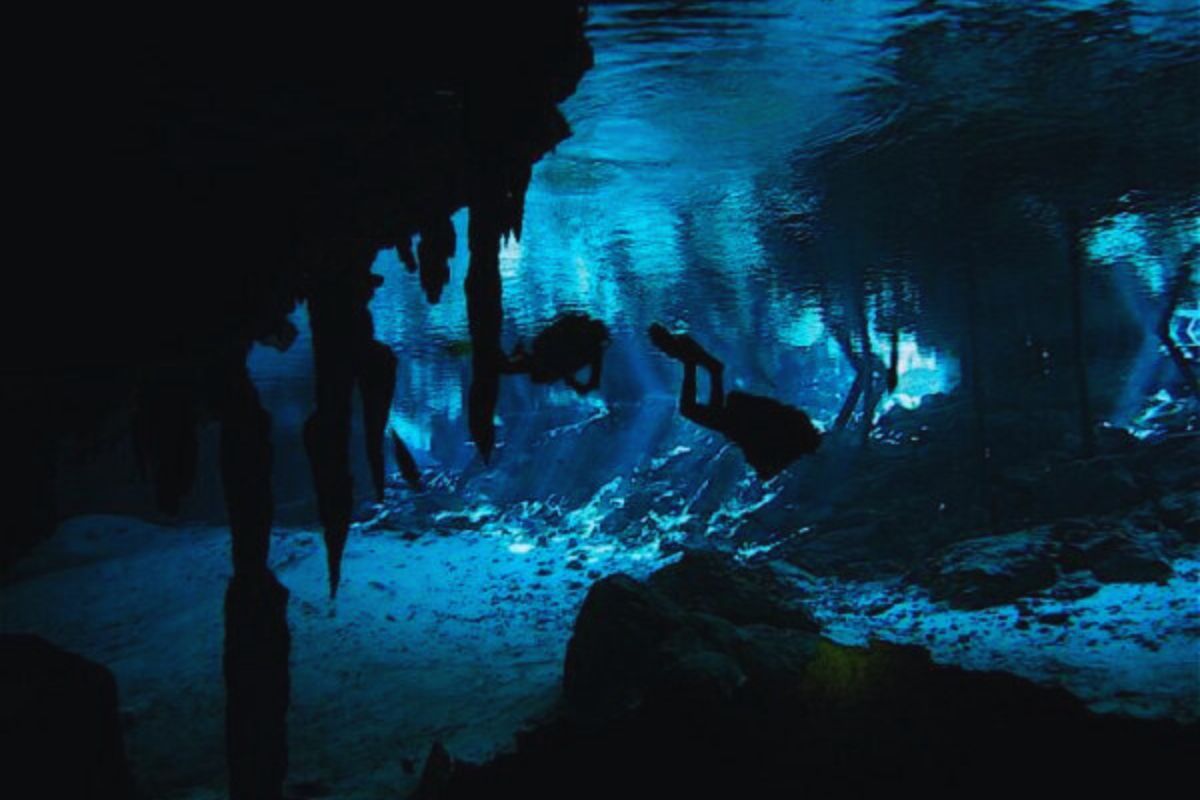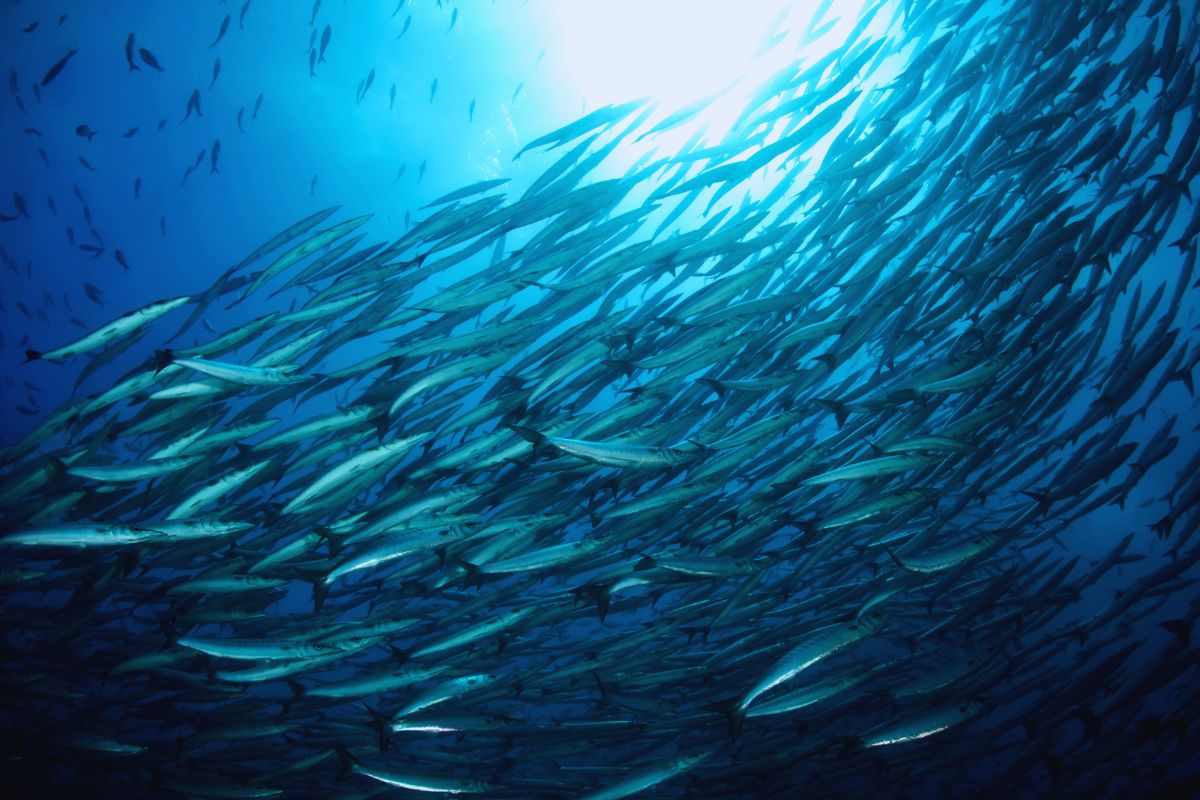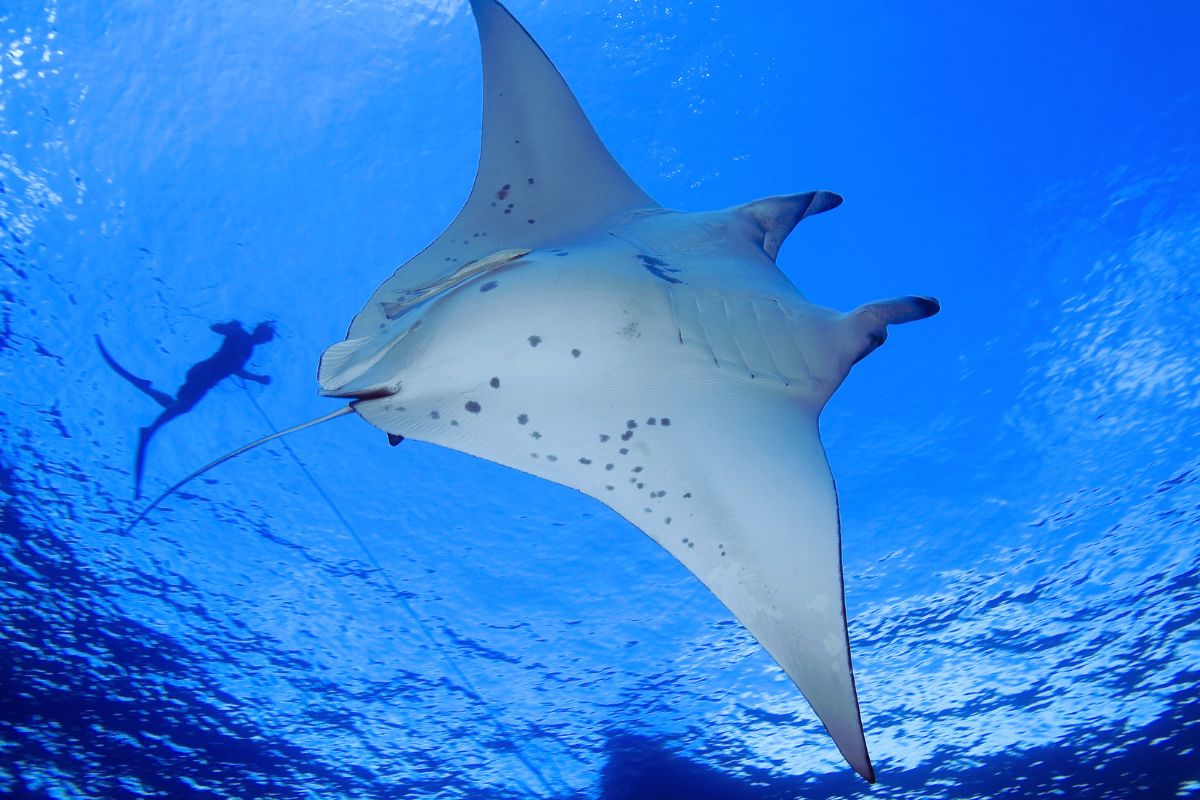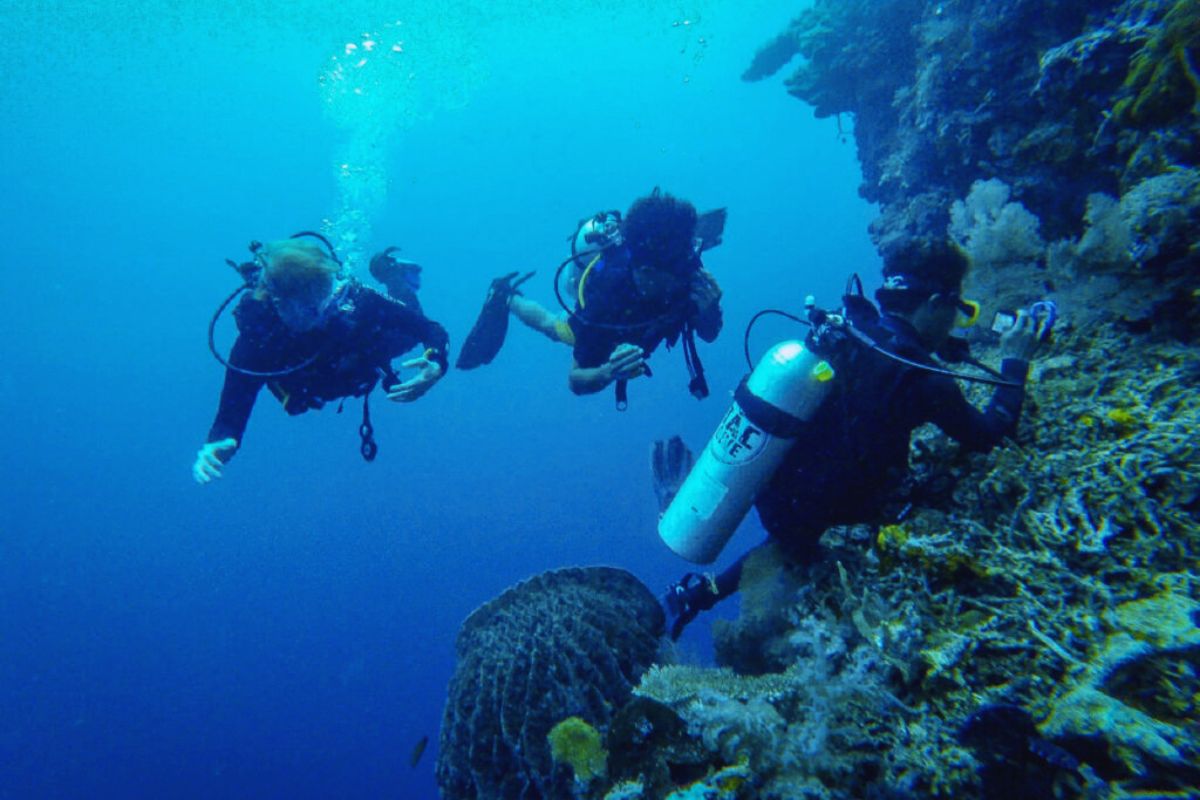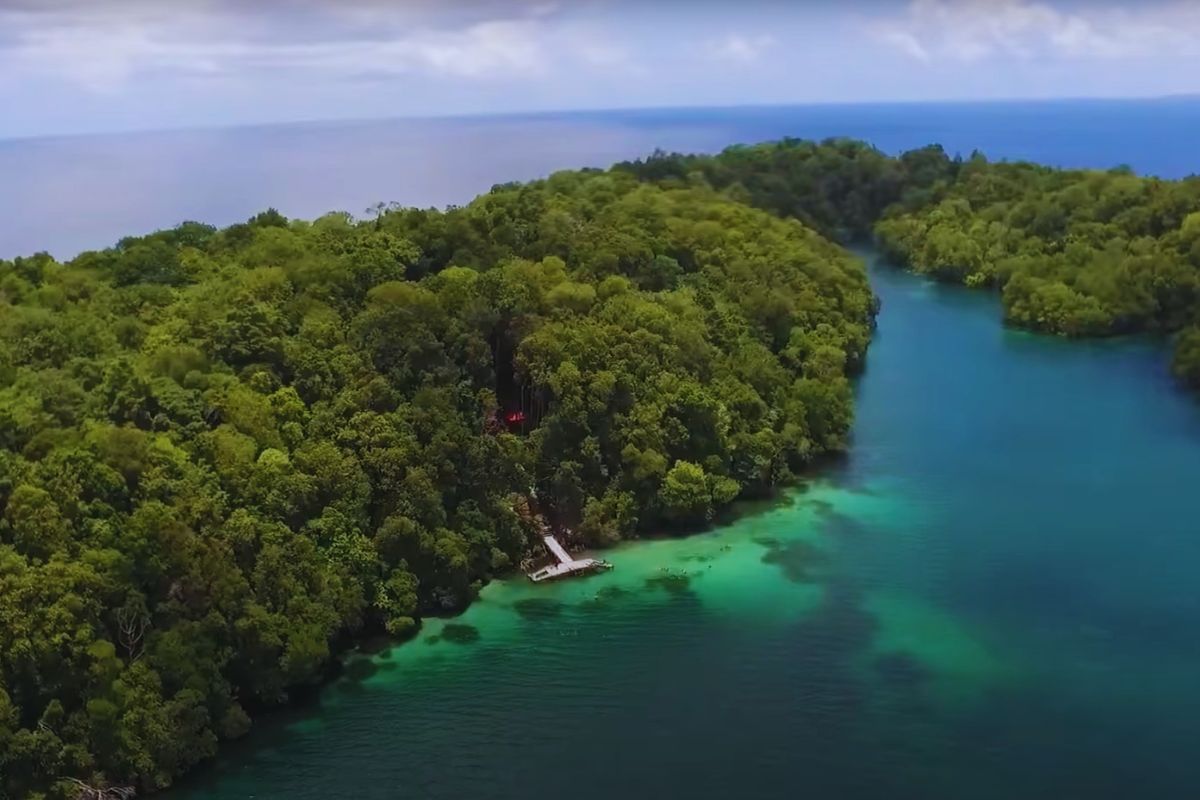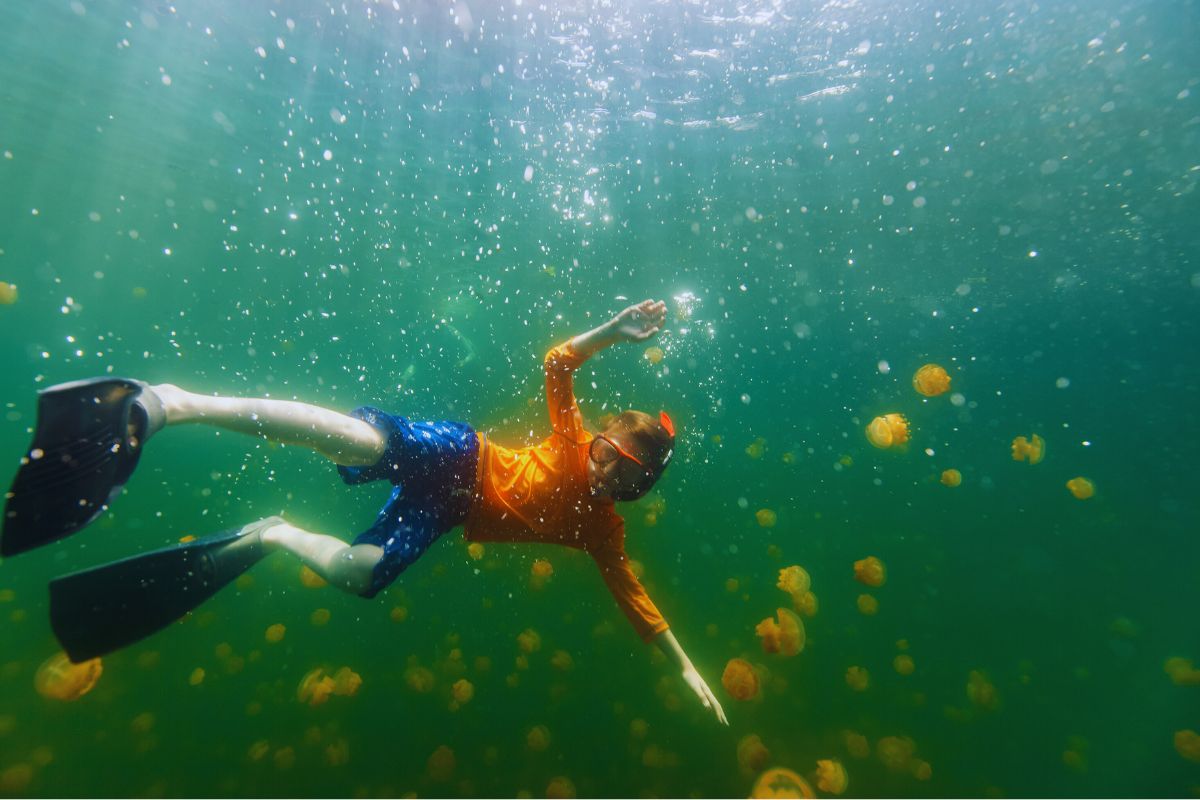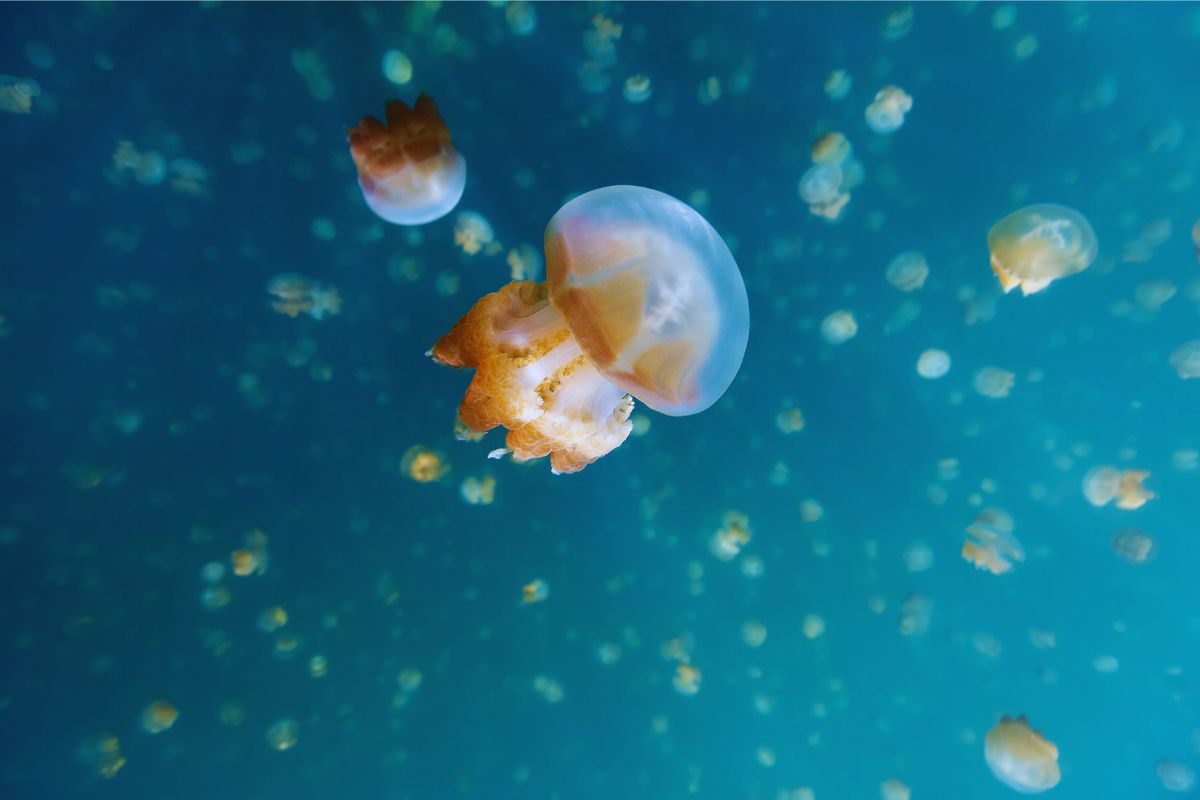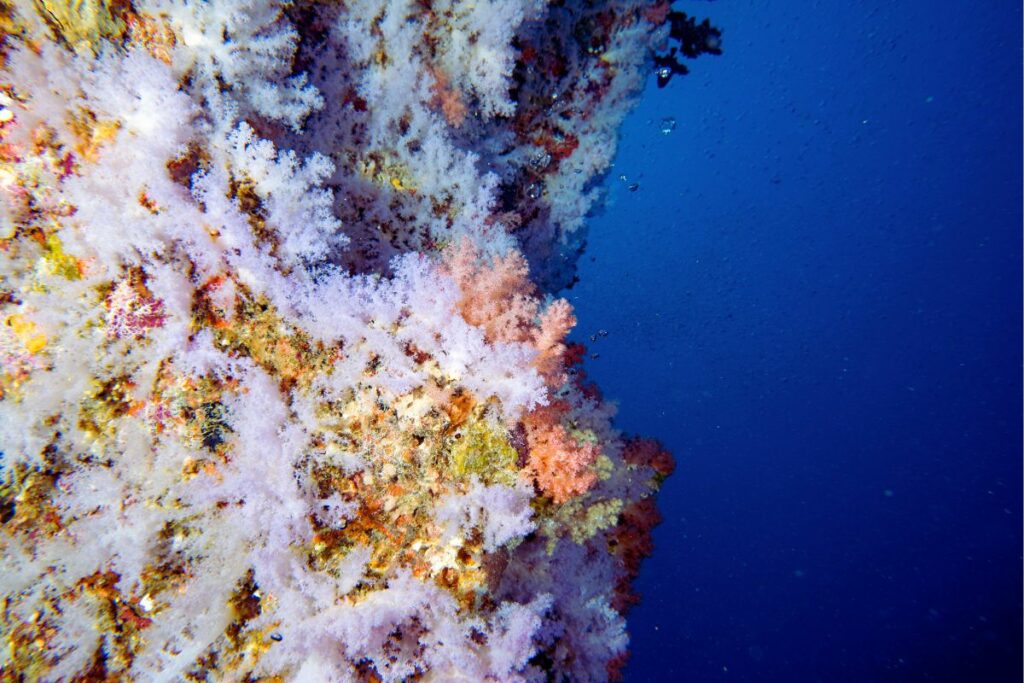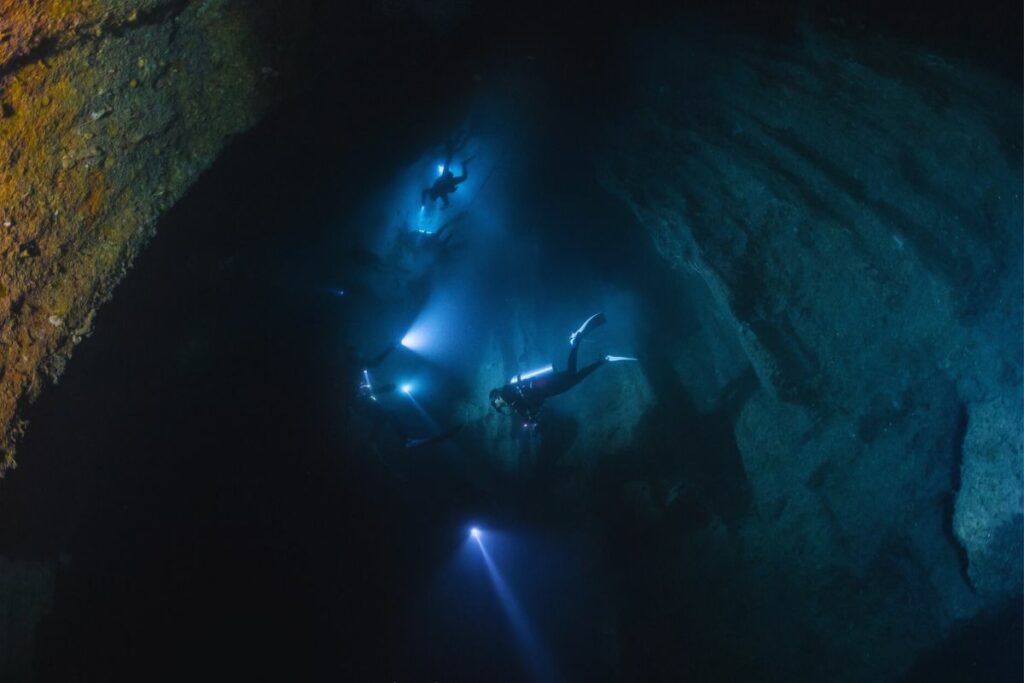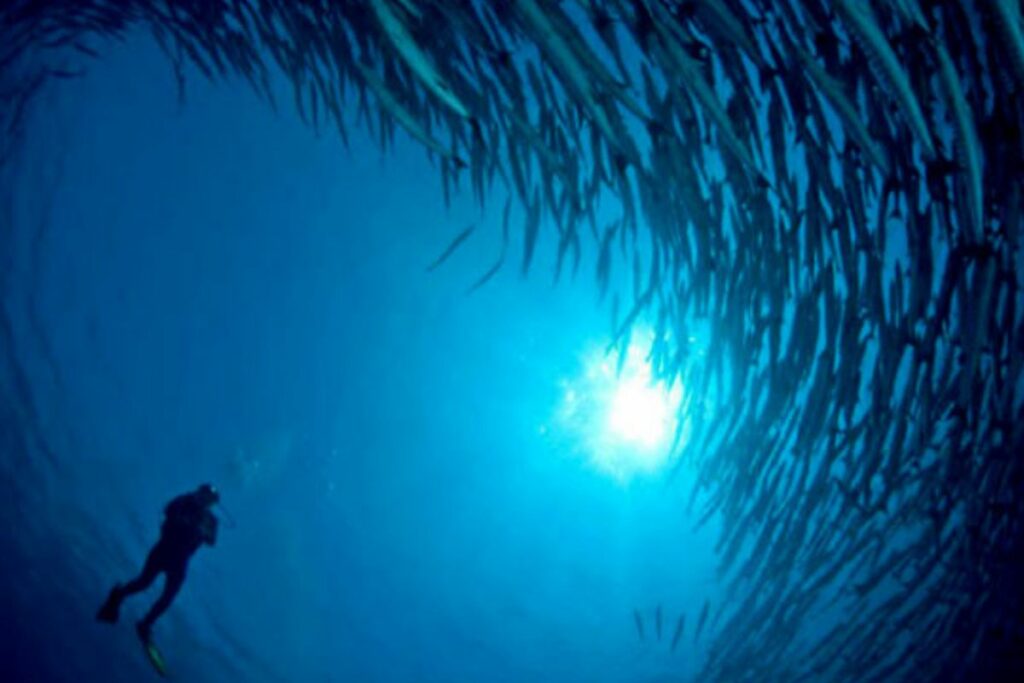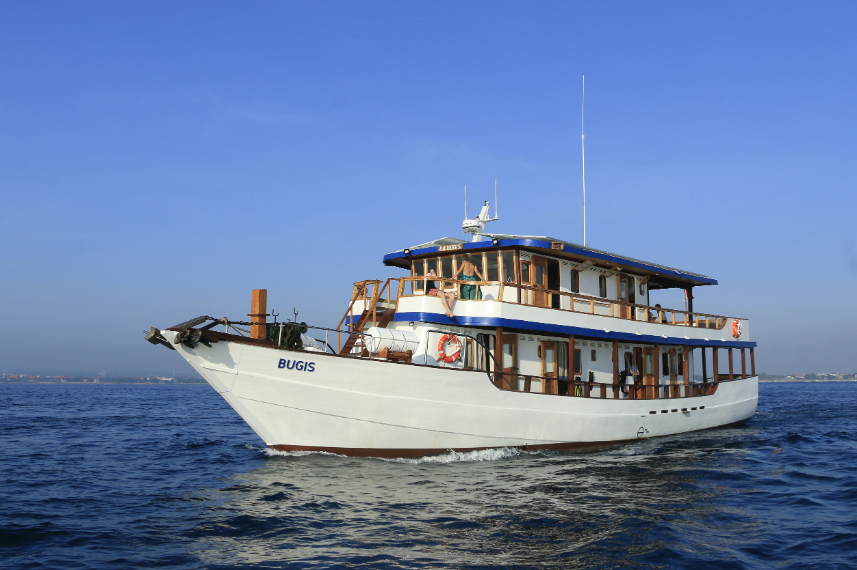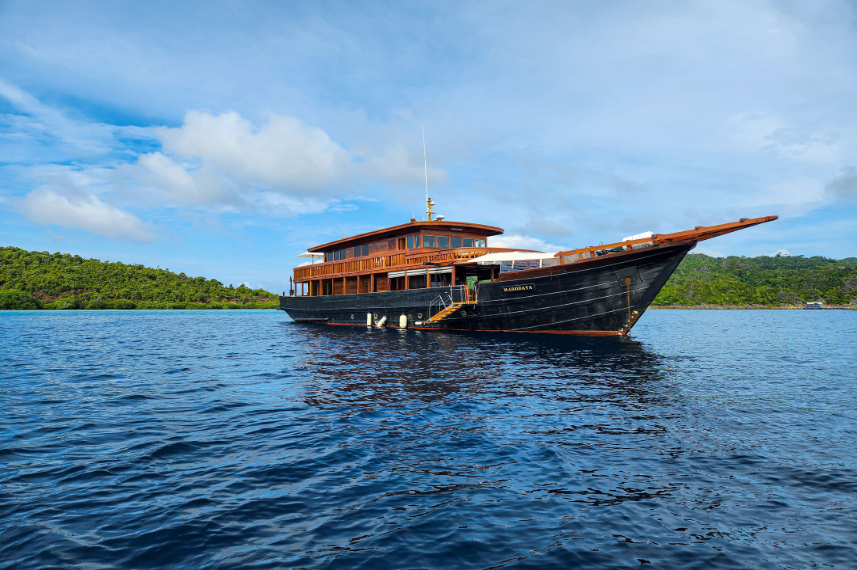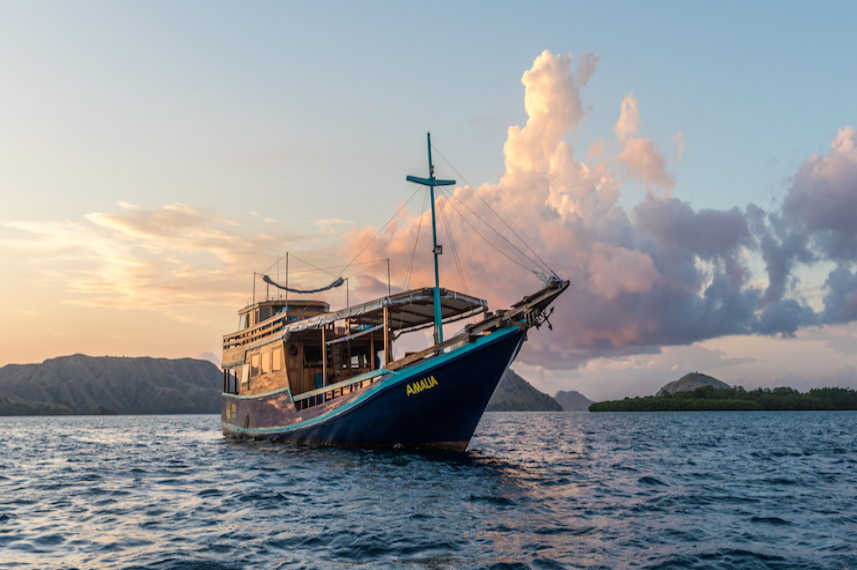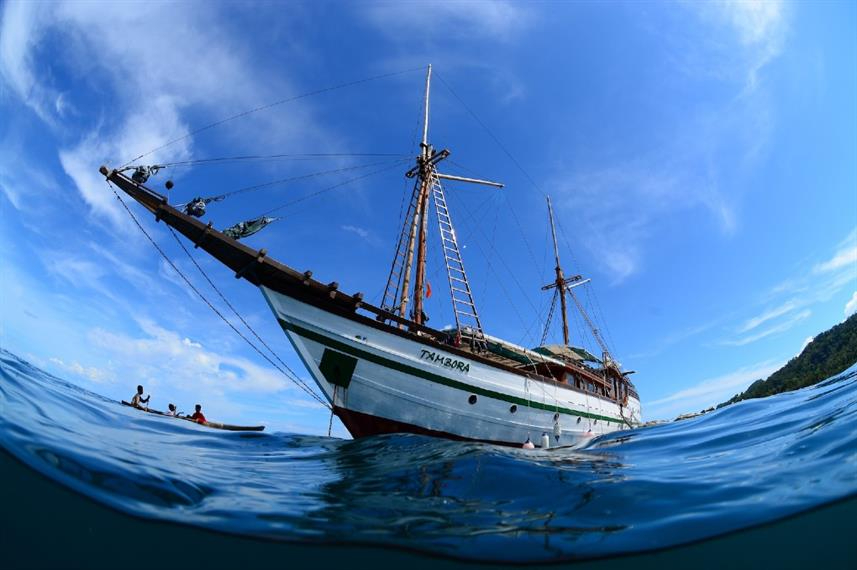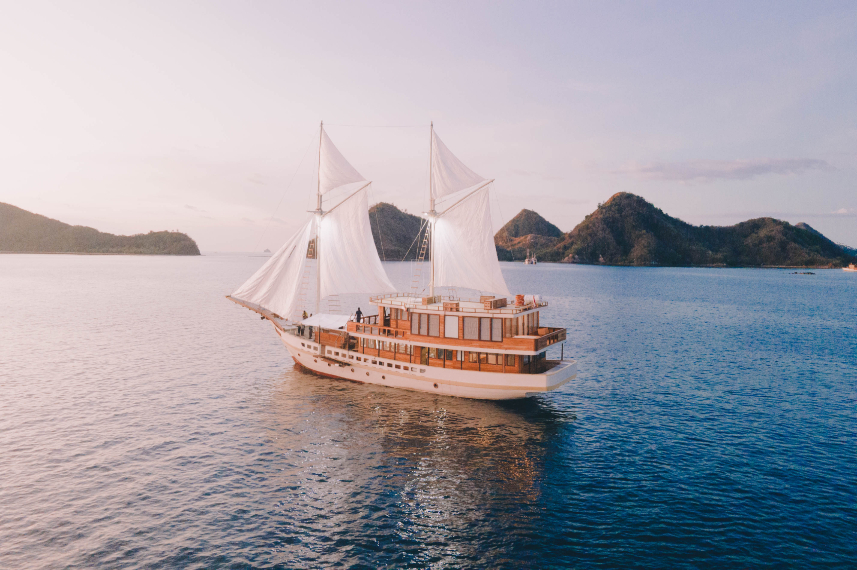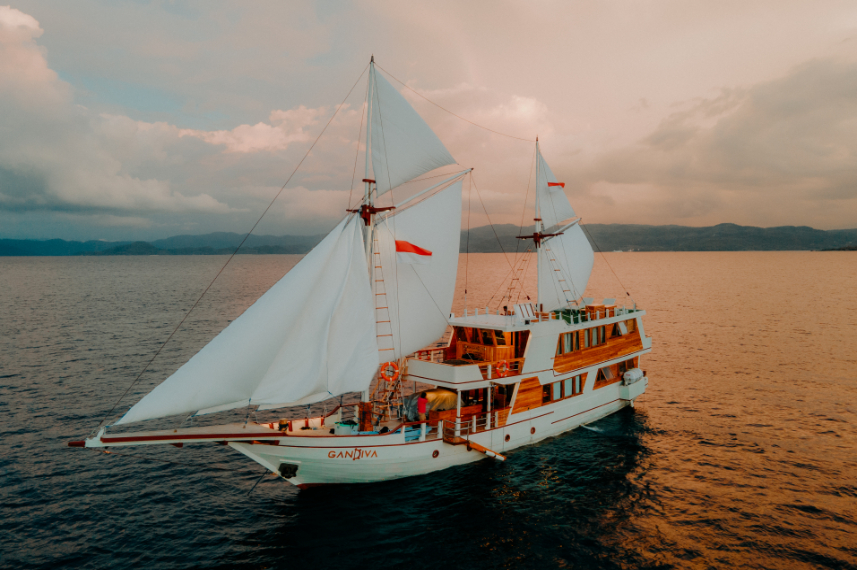Kakaban
Sandwiched between Sangalaki and Maratua, Kakaban is neither small nor large compared to its closer siblings. As part of the Derawan archipelago, Kakaban is surrounded by crystal waters full of marine biodiversity with incredible topography worthy of being explored.
Another unique feature of Kakaban is the marine lake trapped inside the island alongside its species of stingless jellyfish. The landlocked lake is one of the few marine lakes in Indonesia to host non-stinging jellyfish; the others are located on Togian Island and in Misool (Raja Ampat).
Top highlights of Kakaban
- Head to Jellyfish Lake for some unforgettable experience swimming with stingless jellyfish
- Get mesmerized by the beauty of the Blue Light Cave as the light penetrates this excellent cave dive
- Witness the action of some pelagic fish, including sharks and barracudas
- If you’re an advanced diver and looking for an adrenaline rush diving, Kakaban is that place for you
About Kakaban
Kakaban is one of the few islands forming the Derawan archipelago, part of East Kalimantan province. With an area of 1,913 acres, this small island has limestone cliffs and a dense jungle closer to the water’s edge.
Unlike Maratua, which encircled a lagoon with one opening, Kakaban was formed from the uplifting of the coral atoll, changing the landscape of the lagoon into a landlocked lake. Seen from above, Kakaban resembles a crooked bottle opener. The marine lake has been declared as a nature reserve by the government. Kakaban is uninhabited, and in the local language, Kakaban means ‘hug,’ a fitting name as the island hugs the lake from the surrounding seawater.
Diving in Kakaban
The topography in Kakaban primarily consists of sharp drop-offs, with a cave dive in Blue Light Cave, but this particular dive site is reserved only for experienced divers. Even though Kakaban is smaller than Maratua in size, the underwater scenery is as incredible as its neighboring island.
From the big players like different species of sharks, including thresher, nurse, leopard, and sometimes, hammerhead sharks. Whitetip, blacktip, and greytip reef sharks and their oceanic counterparts (whitetip and blacktip) are also commonly found here. Eagle and manta rays can also be spotted around Kakaban, as well as loggerhead, green, and Hawksbill turtles.
Kakaban is also full of schooling chevron barracudas, groupers, bigeye trevallies, sweetlips, spiny mackerels, and jacks. Smaller fish like cuttlefish, lionfish, butterflyfish, surgeonfish, angelfish, scorpionfish, triggerfish, clownfish, and parrotfish are in great numbers. Macro creatures like pygmy seahorses, nudibranchs, different species of octopus, and moray eels can also be seen in the region, though they rarely steal the limelight from the big players.
Discover your next adventure in
The Jellyfish Lake of Kakaban
Though there are other marine lakes in Indonesia, located on Togian Island and Misool (Raja Ampat), the one in Kakaban is considered the most famous one in Indonesia. For non-divers, the stingless jellyfish is synonymous with the Kakaban or Derawan archipelago. Due to its uniqueness, the government declared the lake as a natural reserve.
Formed approximately 11.000 years ago, during the Holocene era, the seawater was trapped because of the geological uplift at around 35 meters above sea level. Seawater mixed with rainwater throughout the centuries, creating a one-of-a-kind natural wonder. Though ocean water is still able to penetrate the lake through crevices, the openings are not wide enough for animals to get through. This reason makes the four jellyfish species lack predators, and over time, their sting is not strong enough to cause harm to humans.
Four species of jellyfish that can be found here are the moon jellyfish (Aurelia aurita), the box jellyfish (Tripedalia cystophora), the spotted jellyfish (Mastigias papua), and the upside-down jellyfish (Cassiopea ornata). There are thousands of them in this lake, even though the moon and the box jellyfish are tricky to spot due to their transparent appearances.
Though the four jellyfish share the center stage, other animals can still be found here. Sea cucumbers, gobies, sea anemones, tunicates, nudibranchs, and crustaceans are among those inhabitants of the lake.
There are rules to follow if you want to experience swimming alongside the stingless jellyfish:
- No fins are allowed. Instead, wear a wetsuit, snorkel, or booties
- No sunscreen as the chemicals can be proven toxic to the ecosystem
- No touching the jellyfish, even though they are harmless
- No jumping in. Instead, enter the lake gently and swim around carefully
Diving Environments in Kakaban
The topography in Kakaban consists of drop-offs and a cave, giving a variety of diving in the region. The depth around the island is between 5 and 65 meters, with the Jellyfish Lake having a depth of around 17 meters.
The visibility in Kakaban is excellent, often exceeding 25 meters on a clear day. The water temperatures in most dive sites range from 26-30 degrees Celsius, thanks to Kakaban’s geographical location, which sits close to the equator line. The currents in Kakaban can be strong, especially in Barracuda Point and Blue Light Cave, but the Kakaban Wall is suitable for all levels due to its protected nature from the currents.
Discover your next adventure in
How to get to Kakaban
Since there is no resort in Kakaban, you have to book your accommodation in Maratua, Derawan, or Sangalaki and then explore Kakaban on a day trip.
Via Berau
Direct flights to Berau are available from Jakarta (Batik Air and Citilink) and Surabaya (Batik Air). There is no direct flight from Bali. Then, from Berau, there is a flight to Maratua using small planes, and the ticket can only be purchased on the spot.
Reaching Maratua and Sangalaki is also possible by boat. The journey from Sanggam Harbor in Berau to Maratua takes approximately three hours. Another option is to depart from the Tanjung Batu harbor (about 3 hours from the airport), which only takes about an hour to Maratua. The boat to Sangalaki only takes about 30 minutes.
Via Tarakan
Another entry point to Maratua is from Tarakan. Direct flights from Surabaya (Lion Air) and Jakarta (Batik Air) are available. Once arriving in Tarakan, direct flight to Maratua is also possible using small planes, and the ticket can only be purchased on the spot.
Taking a speedboat from Tarakan to Maratua is another option, though it takes slightly longer, about 3,5 hours. Once arriving in Tarakan, you must go to Tengkayu harbor and rent a boat to Derawan. The journey itself takes approximately three hours.
Diving Seasons & Weather in Kakaban
Diving in Maratua or Kakaban can be done all year, but the best period to dive is between April and October, when the island experiences the dry season. The visibility during this season is also excellent. The geographical location of Maratua (and all the islands in the Derawan archipelago), which is extremely close to the equator line, guarantees the effect of monsoon is minimal.
Diving during the wet season, which occurs between November to March, is still possible. The exception is in January, when most of the resorts on the island close for maintenance due to the stormy weather.


